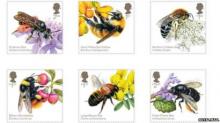Systemic insecticides decreased dragonfly abundance in Japan
Since the mid-1990s, populations of the common Japanese dragonfly Sympetrum frequens in rice fields have declined severely. Application of systemic insecticides—especially fipronil—to nursery boxes of rice seedlings is suspected to be the main cause of the decline. However, until now there have been insufficient population data to test the causality. We conducted a dragonfly survey from 2009 to 2016 in four prefectures of Japan and compiled the data to enable the comparison of population growth rates along five main census routes over the years.










